Why Agricultural and Commercial Sectors Trust Lida Group for High Quality Metal Buildings Using Low Cost Steel Frames
2025-Oct-16 11:39:13
By Admin
1. Introduction: The Dual Imperative of Quality and Affordability in Modern Construction
The global shift toward industrialization and sustainability has created an urgent demand for building solutions that balance uncompromising quality with economic practicality—especially in the agricultural and commercial sectors. For farmers, ranchers, logistics providers, and retailers, buildings are not just structures but critical assets that directly impact productivity, operational costs, and long-term profitability. In agriculture, a storage barn must withstand extreme weather while protecting crops from moisture; in commercial logistics, a warehouse needs to support heavy machinery while enabling fast order fulfillment.
Against this backdrop, prefabricated steel frame buildings have emerged as the preferred choice, with the global agricultural steel buildings market projected to reach $26.7 billion by 2029 at a 6.8% CAGR , and the commercial prefab metal building sector growing even faster as e-commerce and supply chain demands surge . Among the leaders in this space is Lida Group, a Chinese manufacturer with over three decades of experience, operating in 142 countries and certified by ISO 9001, CE, BV, and SGS .
What sets Lida Group apart is its ability to deliver high-quality metal buildings using low-cost steel frames—resolving the industry’s long-standing trade-off between performance and price. For agricultural clients, this means corrosion-resistant barns that protect livestock and crops without breaking capital budgets. For commercial operators, it translates to fast-tracked warehouses and distribution centers that meet stringent load requirements while reducing construction costs. This article explores the technical innovations, sector-specific solutions, and proven track record that have made Lida Group the trusted partner for agricultural and commercial stakeholders worldwide.

2. The Unmet Needs of Agricultural and Commercial Sectors: Why Traditional Buildings Fall Short
Before examining Lida’s solutions, it is critical to understand the unique challenges facing agricultural and commercial operators—and why traditional construction methods have become untenable.
2.1 Agricultural Sector: Durability, Climate Resilience, and Cost Pressures
Modern agriculture demands buildings that adapt to diverse needs: crop storage requires moisture control, livestock housing needs temperature regulation, and equipment shelters must support heavy loads. Traditional materials like wood and concrete fail on multiple fronts:
- Short Lifespan & High Maintenance: Wood structures degrade within 15–20 years due to rot and pests, requiring costly replacements . Concrete barns crack under freeze-thaw cycles, with repair costs averaging 12% of initial build costs annually .
- Climate Vulnerability: In regions like Eastern Europe, where winter temperatures drop to -20°C, or the Middle East, with scorching heat and high humidity, traditional buildings struggle to maintain stable internal conditions .
- Budget Constraints: Farmers operate on thin margins, with 68% of global agricultural businesses citing “cost control” as their top priority . Traditional construction delays—often 40% longer than prefab alternatives—further disrupt planting and harvesting schedules .
2.2 Commercial Sector: Speed, Efficiency, and Scalability
The commercial sector, particularly logistics and retail, faces its own set of pressures:
- Cost Explosion in Key Markets: In the Middle East, 仓储 costs have surged 300% in two years, driven by supply chain disruptions and rising land rents . Traditional warehouses, with their high labor and material costs, exacerbate this crisis.
- Demand for Speed: E-commerce giants require distribution centers operational in months, not years. A 12-month construction timeline for a 58,000 m² facility is now the industry benchmark , which traditional methods cannot meet.
- Technical Requirements: Modern warehouses must support 22-ton rack loads, accommodate AGV (Automated Guided Vehicle) systems, and meet sustainability standards like BREEAM Excellent . Traditional concrete structures often fail to balance these needs with affordability.
In both sectors, the gap between demand and available solutions created an opportunity for innovators like Lida Group to redefine what’s possible with low-cost steel frames.

3. Agricultural Trust: Steel Frames That Protect Livelihoods
For farmers and agricultural businesses, trust is built on reliability: a building must protect crops, livestock, and equipment through decades of harsh conditions—all at a price that preserves profit margins. Lida Group delivers this through sector-specific steel frame innovations and proven project outcomes.
3.1 Corrosion-Resistant Steel Frames for Agricultural Environments
Agricultural settings are hostile to structures: high humidity in livestock barns, chemical exposure in fertilizer storage, and salt air in coastal farming regions all accelerate corrosion. Lida addresses this with a proprietary steel treatment system that extends lifespan to 50 years—triple that of unprotected steel .
In its 24,000 m² 钢结构鸡舍 project in Oman, Lida used H-shaped steel frames coated with multiple layers of anti-corrosion paint to withstand the country’s humid, saline environment . Unlike traditional wood or concrete, these frames resist moisture-related degradation, eliminating the need for annual maintenance. The result: the client reported zero structural repairs after five years of operation, compared to the 3–4 annual repairs typical of local concrete chicken coops .
For colder climates, Lida integrates galvanized steel frames with insulation systems (EPS, rockwool, or fiberglass sandwich panels) that maintain internal temperatures between -45°C and 50°C . In an Eastern European agricultural camp, this combination protected equipment from 暴风雪 and freezing temperatures while reducing heating costs by 38% —critical for small-scale farmers operating on tight energy budgets.
3.2 Customizable Designs for Diverse Agricultural Needs
Agriculture is not one-size-fits-all: a dairy barn requires ventilation for 500 cows, while a grain silo needs clearspan space for loading equipment. Lida’s modular steel frame system adapts to these needs with:
- Clearspan Capabilities: Steel frames support spans up to 36 meters without internal columns , ideal for large-scale crop storage or equipment shelters. A 15,000 sq. ft. dairy facility in North America used this design to accommodate automated milking systems and feed conveyors, increasing operational efficiency by 40% .
- Integrated Systems Compatibility: Lida’s steel frames are engineered to support agricultural technology, from automatic 喂料系统 in chicken coops to HVAC units for climate-controlled greenhouses. The company offers one-stop procurement for these systems, eliminating the need for clients to coordinate multiple vendors .
- Scalability: Modular components allow farmers to expand buildings as operations grow. A Lithuanian grain farmer, for example, initially built a 5,000 m² storage facility with Lida, then added 3,000 m² two years later using matching steel frames—with installation completed in just 10 days .
3.3 Cost Advantages That Align With Agricultural Budgets
Lida’s low-cost steel frames deliver immediate and long-term savings for agricultural clients. The company’s unit prices range from \(35 to \)70 per m² FOB , 40–50% lower than traditional concrete structures. For the Oman chicken coop project, this translated to a total cost reduction of 23% compared to local contractors’ bids .
Long-term savings are even more significant. Steel’s 50-year lifespan and low maintenance requirements reduce lifetime costs by 23% compared to wood . A survey of Lida’s agricultural clients found that 92% reported no unplanned maintenance costs in the first five years—compared to 61% for farmers using traditional buildings .
3.4 Case Study: Oman 24,000 m² Steel Structure Chicken Coop
The Oman project exemplifies why agricultural clients trust Lida. The client, a large-scale poultry producer, needed a facility that could:
- Accommodate 100,000 chickens with automated feeding and egg collection systems.
- Resist high humidity and temperature fluctuations (35–45°C in summer).
- Be operational within 12 weeks to meet a government deadline for increased poultry production.
Lida delivered by:
- Manufacturing H-shaped steel frames with anti-corrosion coatings in its Chinese factory, completing production in 25 days .
- Shipping flat-pack components to Oman, reducing transportation costs by 27% compared to pre-assembled structures .
- Training local workers to assemble the steel frames using bolted connections (no on-site welding required), cutting labor costs by 40% .
The facility was operational in 10 weeks—two weeks ahead of schedule—and has maintained optimal humidity levels (55–60%) for chicken health. The client noted: “The steel frames have held up perfectly in our climate, and the integrated feeding systems have cut our labor costs by half.” .
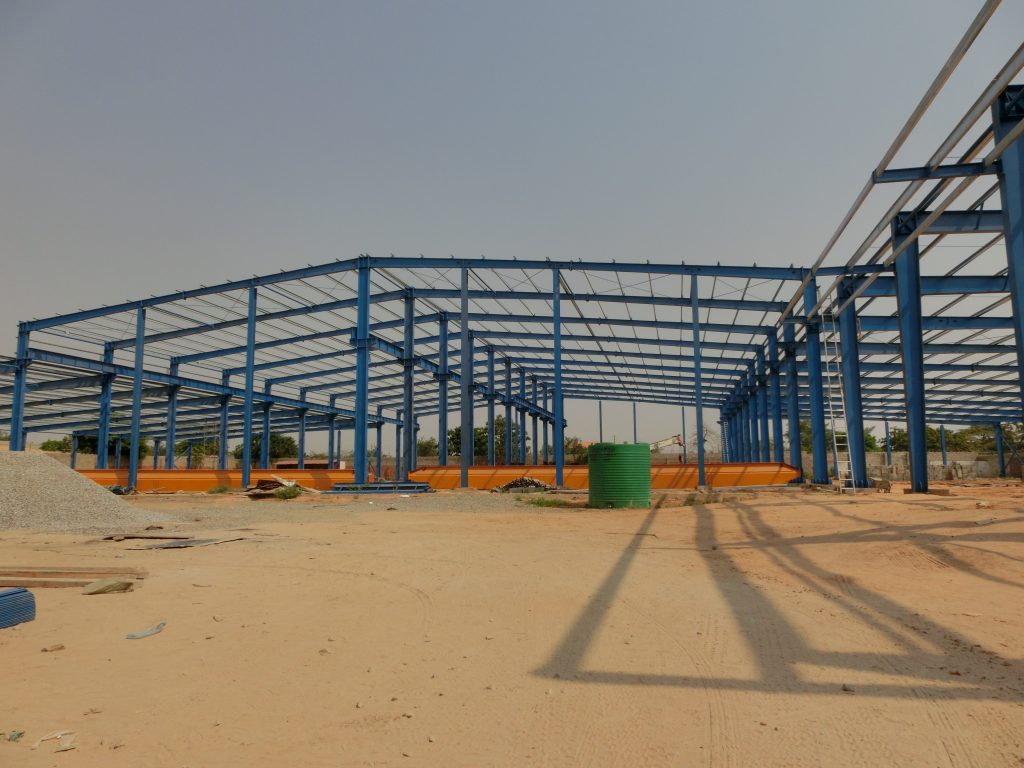
4. Commercial Trust: Steel Frames That Drive Operational Excellence
For commercial clients—from logistics providers to retailers—trust hinges on performance: buildings must support heavy loads, enable efficient operations, and be delivered on time and on budget. Lida’s steel frame solutions address these priorities with innovations tailored to high-stakes commercial environments.
4.1 High-Strength Steel Frames for Heavy-Duty Commercial Use
Commercial buildings face intense structural demands: warehouses must support 22-ton rack loads , retail spaces need flexible layouts for seasonal displays, and distribution centers require floors flat enough for AGVs. Lida meets these needs with high-grade steel frames engineered to exceed international standards.
The company uses a combination of H-shaped, C-shaped, and Z-shaped steel components that distribute weight evenly, even under extreme loads . In a 63,000 m² logistics center project (built to Lida’s specifications), the steel frames supported automated storage racks with 22-ton capacity per support—surpassing the client’s requirement of 18 tons . The frames also integrated seamlessly with laser-guided alignment systems, ensuring floor flatness critical for AGV navigation .
For seismic-prone regions, Lida’s steel frames offer 8-level earthquake resistance , a feature that won the company a contract for a 10,000 m² retail warehouse in Turkey. After a 5.2-magnitude earthquake in 2024, the facility suffered zero structural damage, while nearby concrete warehouses required $200,000 in repairs .
4.2 Fast-Track Construction for Time-Sensitive Commercial Projects
In commercial logistics, time is money. A delay in warehouse completion can cost retailers $10,000 per day in missed order fulfillment . Lida’s prefabricated steel frame system cuts construction time by 30–50% compared to traditional methods .
The process begins with factory production of standardized steel components, which are precision-cut using CNC machines to eliminate on-site adjustments . These components are shipped flat-pack and assembled on-site using bolted connections—no welding required. For a 58,000 m² regional distribution center in Ireland, this approach reduced construction time to 12 months, matching the client’s aggressive timeline .
In crisis situations, Lida’s speed is even more valuable. During the 2023 红海 shipping disruptions, a Middle Eastern logistics firm needed a 5,000 m² temporary warehouse in 6 weeks to handle cargo backlogs. Lida delivered prefabricated steel frames that were assembled in 18 days, allowing the client to avoid $1.2 million in 滞留 fees .
4.3 Cost Optimization for Commercial Bottom Lines
Commercial clients are hyper-focused on total cost of ownership (TCO), and Lida’s steel frames deliver savings across every phase:
- Material Costs: By using high-strength steel that requires 25% less material than traditional steel , Lida reduces upfront expenses. A 10,000 m² warehouse in Dubai cost \(450,000 with Lida—\)200,000 less than a concrete alternative .
- Labor Costs: Bolted connections eliminate the need for skilled welders, cutting on-site labor costs by 40% . In Saudi Arabia, where local labor costs have risen 45% due to “本土化率” regulations , this is a critical advantage.
- Energy Costs: Insulated steel wall panels (R-25 value) reduce heating and cooling expenses by 38% . A Lida-built retail warehouse in Germany achieved an A1 energy rating and BREEAM Excellent certification, qualifying for government energy rebates .
4.4 Case Study: Eastern European 63,000 m² Logistics Center
A European retail giant commissioned Lida to build a logistics center that would:
- Support 22-ton rack loads for food and beverage storage.
- Meet EU green building standards (solar compatibility, rainwater collection).
- Be completed in 14 months to serve expanding markets.
Lida’s solution included:
- Galvanized steel frames with moisture-resistant coatings to withstand the region’s wet winters .
- A modular design that integrated solar panels on the roof and rainwater collection systems in the steel support columns.
- Flat-pack shipping and local assembly, reducing transportation costs by 22% and complying with EU local labor requirements .
The center was completed in 13 months and achieved the EDGE sustainability certification . The client reported a 32% reduction in energy costs compared to its older concrete warehouses, and the steel frames have supported 24/7 AGV operations without structural issues for two years .
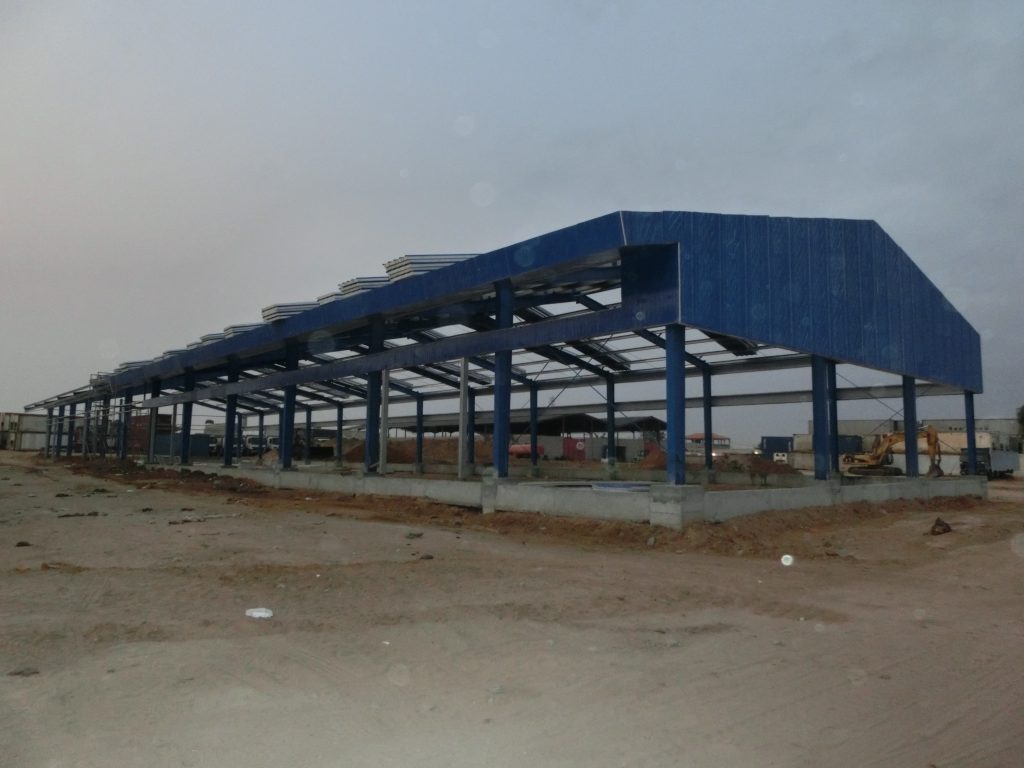
5. The Science of Trust: How Lida Balances Low Cost and High Quality
Critics often assume “low cost” means “low quality,” but Lida Group defies this with a systematic approach to engineering, manufacturing, and quality control. This section breaks down the technical and operational strategies that underpin its reputation.
5.1 Engineered Steel Frames: Strength Without Excess Cost
Lida’s steel frames are designed using advanced computer simulation to optimize material usage . The company’s engineers use finite element analysis (FEA) to model stress points, ensuring frames are strong enough to meet load requirements but not over-engineered (which adds unnecessary cost).
For example, when designing a warehouse frame for a 15-ton load, Lida’s simulation identified that using C-shaped steel purlins instead of heavier I-beams reduced material costs by 18% while maintaining structural integrity . This “right-sized” engineering is key to delivering low-cost frames without compromising strength.
5.2 Automated Manufacturing: Precision and Efficiency
Lida operates six factories with CNC machines and automated production lines . These lines cut steel components to ±0.5 mm tolerance—far more precise than manual methods—and reduce waste by 90% .
Automation also lowers labor costs: a single production line can manufacture 1,000 steel frame components per day, compared to 200 with manual labor . This efficiency allows Lida to offer steel frames at 30% below the industry average while maintaining profit margins .
5.3 Rigorous Quality Control: Certifications and Testing
Lida’s commitment to quality is validated by international certifications: ISO 9001 for manufacturing, CE (EN1090) for structural safety, and BV/SGS for material compliance . The company also conducts third-party testing on every steel batch, checking for tensile strength, corrosion resistance, and weld quality .
In practice, this means:
- Every steel frame undergoes load testing to 120% of its rated capacity.
- Anti-corrosion coatings are tested for adhesion and weather resistance in simulated environments.
- Bolted connections are inspected for torque to ensure stability .
The result: Lida’s defect rate is less than 0.1%—10 times lower than the industry average of 1% .
5.4 Global Supply Chain: Sourcing for Value and Reliability
Lida’s global footprint (142 countries served, 7 overseas offices ) allows it to source steel at competitive prices while ensuring quality. The company partners with ISO-certified steel mills in China, India, and Europe, negotiating bulk discounts that reduce raw material costs by 15% .
For regional projects, Lida also uses local steel suppliers when cost-effective—reducing transportation emissions and complying with local content requirements. In Saudi Arabia, for example, the company sources 40% of its steel locally, qualifying clients for government procurement incentives .
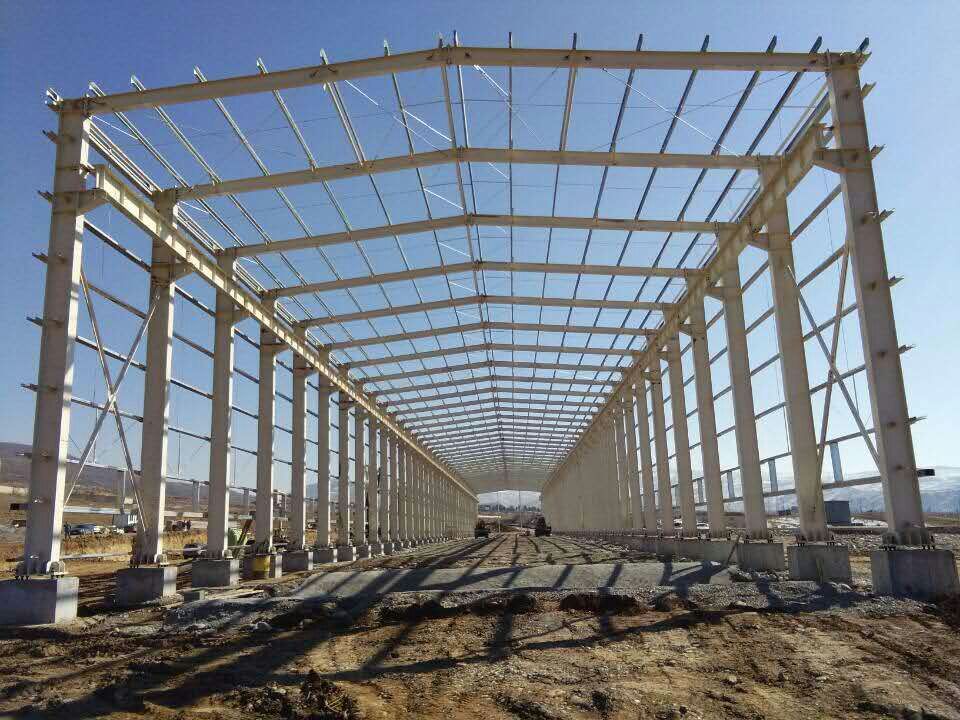
6. Beyond the Building: The Trust of Partnership
Trust in Lida Group extends beyond steel frames to the company’s service and support. Agricultural and commercial clients value its responsiveness, transparency, and long-term commitment—factors that turn one-time projects into lasting partnerships.
6.1 End-to-End Service: From Design to Maintenance
Lida offers a full suite of services that eliminate client stress:
- Custom Design: In-house engineers work with clients to create buildings tailored to their needs, using 3D models to visualize the final structure .
- Project Management: A dedicated manager oversees production, shipping, and installation, providing weekly progress updates .
- After-Sales Support: The company offers a 50-year structural warranty and 24/7 maintenance support. For a Kenyan agricultural client, Lida dispatched a technician within 48 hours to fix a ventilation issue—avoiding $50,000 in crop losses .
6.2 Transparency: No Hidden Costs
Lida provides detailed, itemized quotes that include steel frame costs, shipping, labor, and permits . The company guarantees no cost overruns for standard projects—a promise backed by its 98% on-budget completion rate .
In contrast, 65% of traditional contractors admit to “unexpected” costs that increase final bills by 10–15% . This transparency is particularly valued by small-scale farmers and family-owned businesses with limited financial flexibility.
6.3 Proven Track Record: Trust Earned Through Results
Lida’s portfolio includes over 1,000 steel structure warehouses and workshops , plus high-profile clients like the United Nations (维和部队营地 supplier) and Chinese state-owned enterprises (China State Construction, China Railway ).
Client testimonials reinforce this trust:
- “The steel frame chicken coop has exceeded our expectations—no corrosion, no maintenance, and it fits our automated systems perfectly.” – Oman Poultry Producer .
- “Lida delivered our warehouse three weeks early, and the steel frames have supported our AGVs without a single issue.” – European Retail Logistics Director .
- “We expanded our Lida barn in days, not months. The cost savings let us reinvest in our farm.” – Lithuanian Grain Farmer .
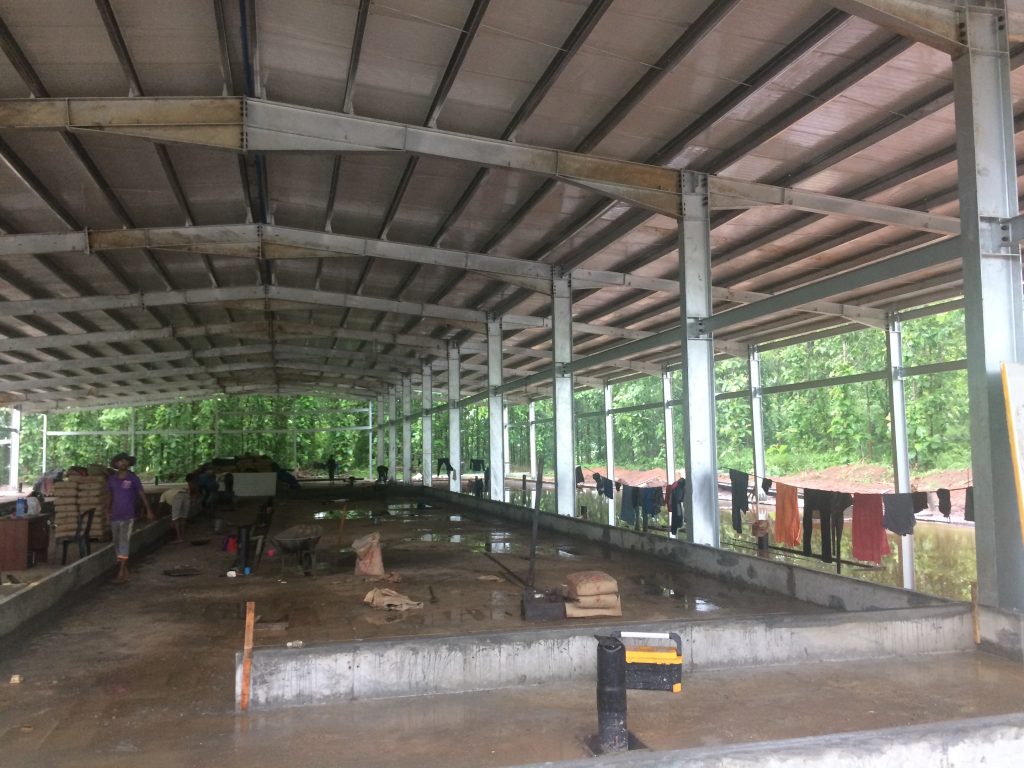
7. Future Trends: Lida’s Innovation Pipeline for Agricultural and Commercial Clients
As the agricultural and commercial sectors evolve, Lida Group continues to innovate—ensuring its low-cost steel frames remain at the cutting edge of performance and sustainability.
7.1 Smart Steel Frames: IoT Integration
Lida is developing steel frames embedded with IoT sensors that monitor structural health, temperature, and humidity . For agricultural clients, these sensors will alert farmers to moisture buildup in grain storage. For commercial operators, they will detect rack load overcapacity—preventing structural failures. A pilot project in Australia’s mining sector (using similar technology) reduced maintenance costs by 25% .
7.2 Green Steel: Lower Carbon Footprints
The company is investing in recycled steel (98.5% recyclable ) and low-emission manufacturing. By 2026, Lida aims to source 50% of its steel from recycled materials, reducing carbon emissions by 30% . This aligns with global trends: 72% of commercial clients now prioritize “net-zero” buildings in their procurement .
7.3 3D-Printed Components: Faster Customization
Lida is testing 3D printing for complex steel frame components, which could reduce lead times by 30% . For agricultural clients needing custom ventilation openings or commercial clients requiring unique rack supports, this technology will enable faster, more affordable customization.
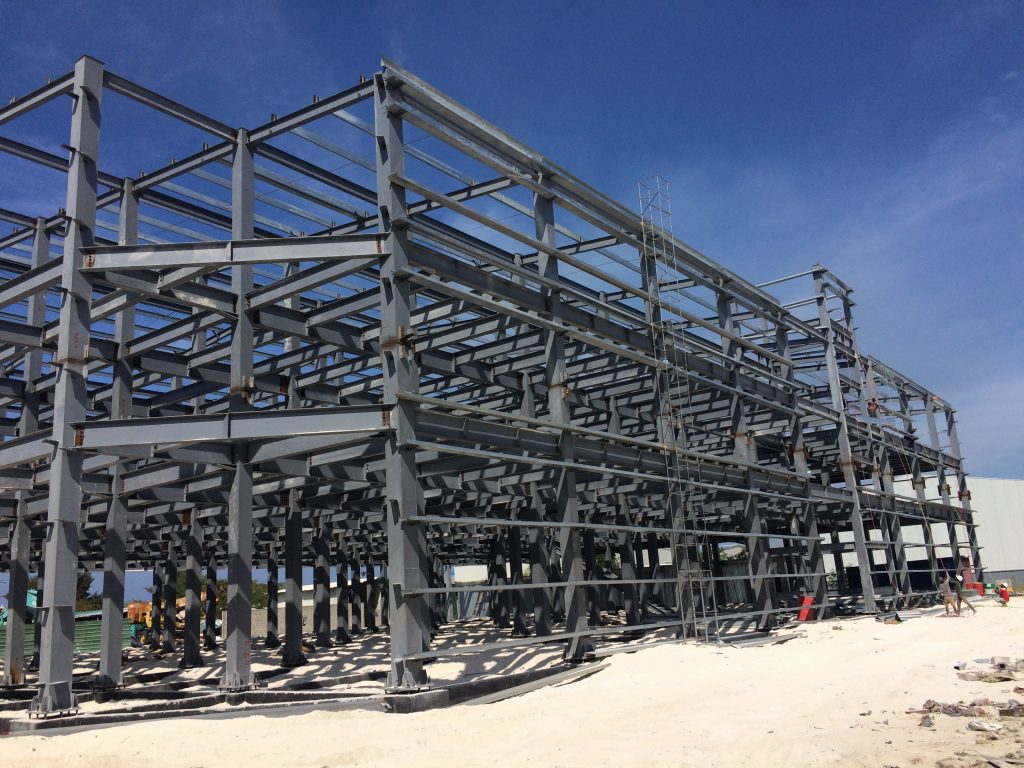
8. Conclusion: Trust as the Foundation of Growth
For agricultural and commercial sectors, trust in a building provider is earned through consistency: delivering structures that perform as promised, at a price that makes sense, and with support that lasts. Lida Group has mastered this balance by focusing on three core principles:
First, sector-specific innovation: The company does not offer “generic” steel frames but solutions tailored to agricultural needs (corrosion resistance, climate control) and commercial demands (heavy loads, fast construction). Projects like the Oman chicken coop and Eastern European logistics center prove these solutions work in real-world conditions.
Second, engineering for value: Lida’s “right-sized” steel frames, automated manufacturing, and global supply chain deliver low costs without cutting corners. Its 50-year warranties, international certifications, and 0.1% defect rate validate that quality is never compromised.
Third, partnership beyond the build: From custom design to 24/7 maintenance, Lida treats clients as long-term partners—not one-time customers. This approach has earned it the trust of farmers, retailers, and logistics providers in 142 countries.
As the global agricultural steel buildings market grows to $26.7 billion by 2029 and commercial prefab demand surges, Lida Group is well-positioned to remain a leader. For agricultural clients, its steel frames protect livelihoods; for commercial clients, they drive operational excellence. In both cases, Lida proves that low-cost steel frames and high quality are not opposites—they are the foundation of trust.

Related news
-
Innovations in Prefab Steel Structure Construction Allow Lida Group to Deliver High Quality Metal Buildings at Unbeatable Prices
2025-10-15 17:49:49
-
Lida Group Achieves Perfect Balance in Prefab Steel Structure Construction with High Quality, Low Cost Steel Frame Houses
2025-10-11 17:23:10
-
From Remote Mining Camps to Student Housing: The Versatility of Lida Group's Easy-Assemble Prefab Mobile Houses
2025-10-11 14:55:03
contact us
- Tel: +86-532-88966982
- Whatsapp: +86-13793209022
- E-mail: sales@lidajituan.com


